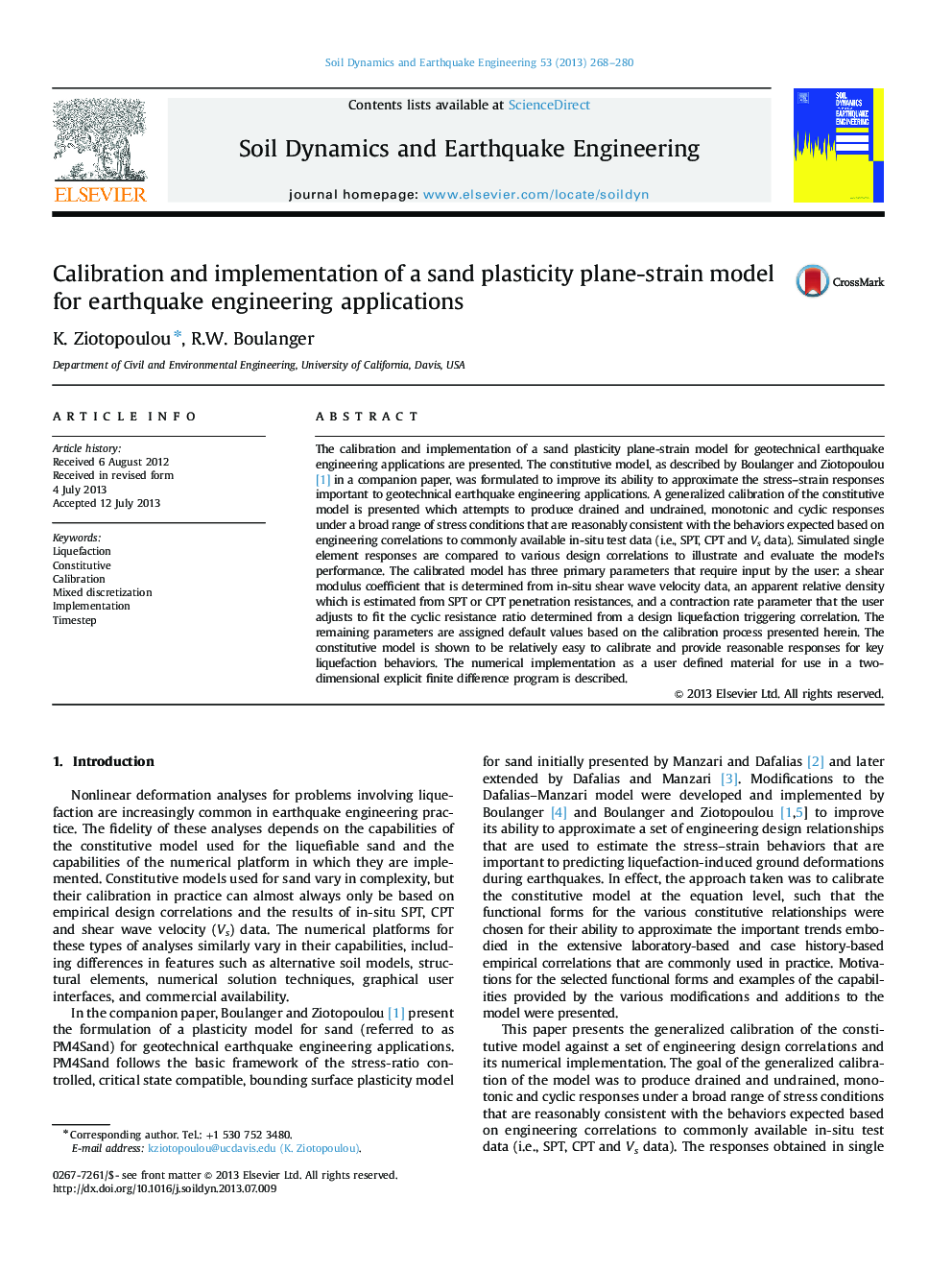| Article ID | Journal | Published Year | Pages | File Type |
|---|---|---|---|---|
| 6772857 | Soil Dynamics and Earthquake Engineering | 2013 | 13 Pages |
Abstract
The calibration and implementation of a sand plasticity plane-strain model for geotechnical earthquake engineering applications are presented. The constitutive model, as described by Boulanger and Ziotopoulou [1] in a companion paper, was formulated to improve its ability to approximate the stress-strain responses important to geotechnical earthquake engineering applications. A generalized calibration of the constitutive model is presented which attempts to produce drained and undrained, monotonic and cyclic responses under a broad range of stress conditions that are reasonably consistent with the behaviors expected based on engineering correlations to commonly available in-situ test data (i.e., SPT, CPT and Vs data). Simulated single element responses are compared to various design correlations to illustrate and evaluate the model's performance. The calibrated model has three primary parameters that require input by the user: a shear modulus coefficient that is determined from in-situ shear wave velocity data, an apparent relative density which is estimated from SPT or CPT penetration resistances, and a contraction rate parameter that the user adjusts to fit the cyclic resistance ratio determined from a design liquefaction triggering correlation. The remaining parameters are assigned default values based on the calibration process presented herein. The constitutive model is shown to be relatively easy to calibrate and provide reasonable responses for key liquefaction behaviors. The numerical implementation as a user defined material for use in a two-dimensional explicit finite difference program is described.
Related Topics
Physical Sciences and Engineering
Earth and Planetary Sciences
Geotechnical Engineering and Engineering Geology
Authors
K. Ziotopoulou, R.W. Boulanger,
